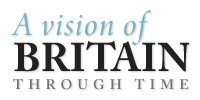In 1887, John Bartholomew's Gazetteer of the British Isles described Skye like this:
Skye, island (the largest of the lnner Hebrides), Inverness-shire, pop. 16,889; is separated from the mainland of Inverness-shire by the Sound of Sleat (½ mile wide at the narrowest part - Kyle Rhea), measures 48 miles in length and from 3 to 25 miles in breadth, is everywhere deeply indented by sea-lochs, and is remarkable for the grand cliff and mountain scenery around its coasts. ...
The surface is nearly all mountainous, rising in the Cuillin Hills to an alt. of 3234 ft., and much of the scenery is wildly grand and romantic. There is a considerable number of streams and freshwater lochs, most of which afford abundance of trout and salmon. The climate is very moist. The amount of arable land is small, and lies chiefly along the seaboard, and the greater part of it is cultivated under the crofter system. Oats, potatoes, and turnips are grown. There is a woollen factory at Portree. The fisheries are of much importance, Skye combining with Loch Carron to form one of the fishery districts of Scotland. Skye comprises 7 pars.; Portree, which has regular communication by steamers with Glasgow, is the only town.
Skye through time
Skye is now part of Highland district. Click here for graphs and data of how Highland has changed over two centuries. For statistics about Skye itself, go to Units and Statistics.
GB Historical GIS / University of Portsmouth, History of Skye, in Highland and Inverness Shire | Map and description, A Vision of Britain through Time.
URL: https://www.visionofbritain.org.uk/place/20157
Date accessed: 27th July 2024
Not where you were looking for?
Click here for more detailed advice on finding places within A Vision of Britain through Time, and maybe some references to other places called "Skye".
